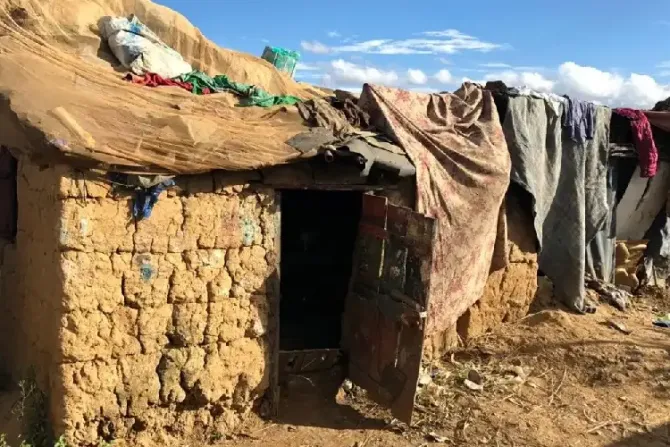CNA Newsroom, Dec 15, 2022 / 10:00 am
The Akamasoa Argentina project draws its inspiration from the example of Father Pedro Opeka, an Argentine priest who arrived in Madagascar more than 50 years ago and since then has worked to improve the quality of life of hundreds of thousands of Africans.
Akamasoa Argentina’s founder, Gastón Vigo Gasparotti, told Channel Orbe 21 about the origins, goals, and the daily routine of the volunteer work he does in the town of Lima, located in Buenos Aires Province.
Gastón explained that the intention is to build a site where before “there was nothing,” as did Opeka, who together with the local community in Madagascar managed to transform a dump into a city and lift half a million people out of poverty.
With the same conviction, Akamasoa Argentina builds houses, gardens, health clinics, hydroponic gardens, workplaces, maternity hospitals, and cemeteries.
The idea is “that the work of the volunteers, of the families, of those of us who make up the work team, is really a mutual sacrifice,” he explained.
The volunteers work alongside the families that live there and benefit from the project. On a day-to-day basis, “what seemed impossible is starting to look like an oasis of hope,” the young man commented.
In 2022, 2,800 people with different thoughts, creeds, nationalities, or ideologies spent some time volunteering for the organization, but with something in common: “They see in the poor person a human being who must be helped.”
The city of Lima was chosen for the project because it’s a reflection of Argentine society, Gastón explained. “Lima is within the province of Buenos Aires, where 40% of the country’s poverty is concentrated,” he noted.
In addition, “it’s a site that reflects some of our paradoxes: a place with nuclear power plants that has no hospitals, a place with 35,000 people that has seven shanty towns,” he pointed out.
There are 80 families who are involved on an ongoing basis in the Akamasoa project, and almost 3,000 volunteers who don’t go every day but show up throughout the year. There is also a very skilled team in specific areas, with architects, engineers, lawyers, publicists — people who are thinking and imagining how to help.
The protagonists of the project “are those 80 families with whom we work every day in the field,” he said.
“God willing we can acquire new lands, that we can finish this first neighborhood and continue building communities as long as we live,” he said.
“The task of volunteering is a beautiful thing, and few things in life give so much inner satisfaction,” Gastón reflected. “What we try to do is be bridges of mercy. Mercy (‘misericordia’ in Spanish) comes from misery; the more you see misery in people’s eyes, the more strength you have.”
This story was first published by ACI Prensa, CNA’s Spanish-language news partner. It has been translated and adapted by CNA.



